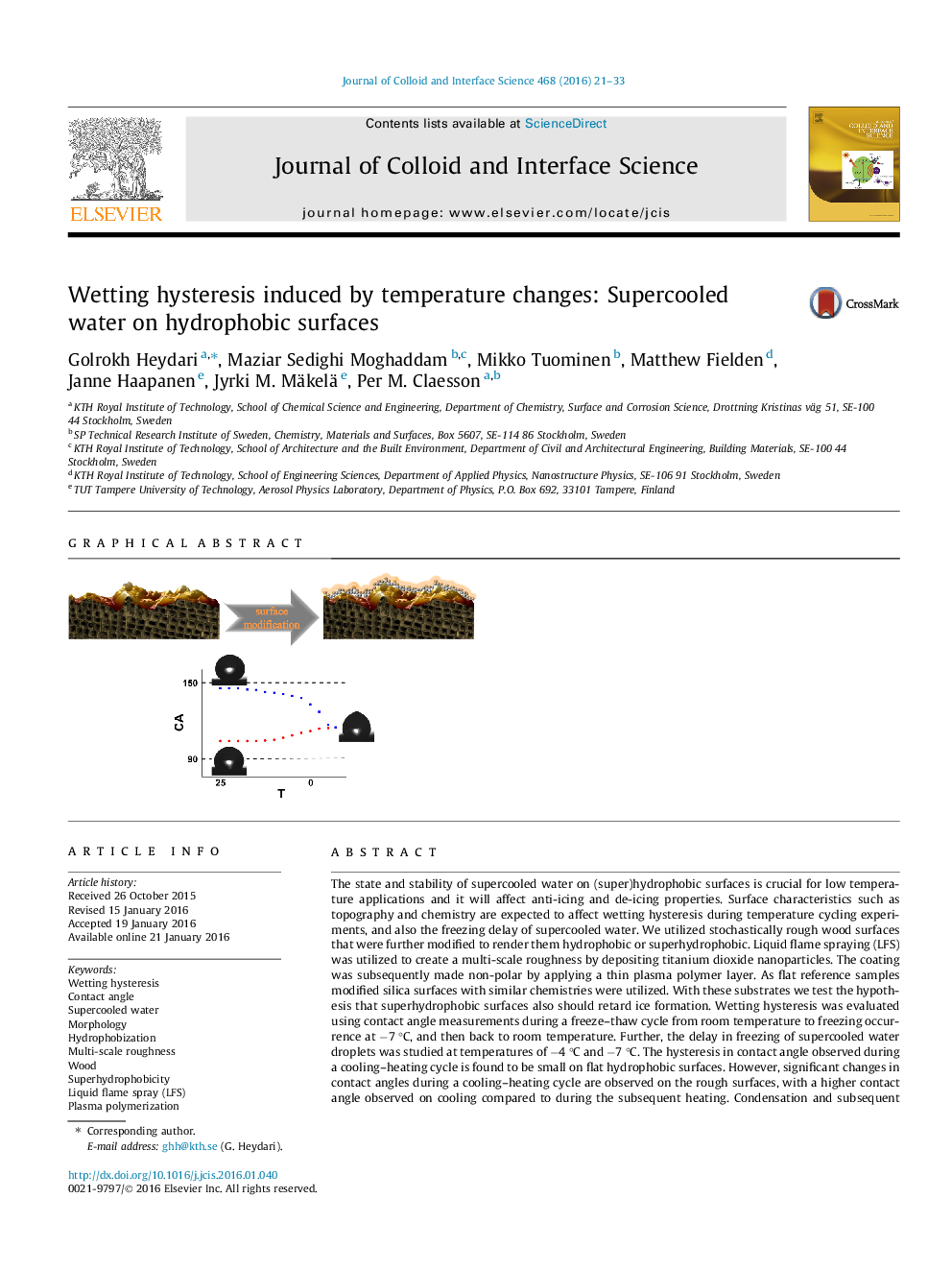| کد مقاله | کد نشریه | سال انتشار | مقاله انگلیسی | نسخه تمام متن |
|---|---|---|---|---|
| 606416 | 1454527 | 2016 | 13 صفحه PDF | دانلود رایگان |
The state and stability of supercooled water on (super)hydrophobic surfaces is crucial for low temperature applications and it will affect anti-icing and de-icing properties. Surface characteristics such as topography and chemistry are expected to affect wetting hysteresis during temperature cycling experiments, and also the freezing delay of supercooled water. We utilized stochastically rough wood surfaces that were further modified to render them hydrophobic or superhydrophobic. Liquid flame spraying (LFS) was utilized to create a multi-scale roughness by depositing titanium dioxide nanoparticles. The coating was subsequently made non-polar by applying a thin plasma polymer layer. As flat reference samples modified silica surfaces with similar chemistries were utilized. With these substrates we test the hypothesis that superhydrophobic surfaces also should retard ice formation. Wetting hysteresis was evaluated using contact angle measurements during a freeze–thaw cycle from room temperature to freezing occurrence at −7 °C, and then back to room temperature. Further, the delay in freezing of supercooled water droplets was studied at temperatures of −4 °C and −7 °C. The hysteresis in contact angle observed during a cooling–heating cycle is found to be small on flat hydrophobic surfaces. However, significant changes in contact angles during a cooling–heating cycle are observed on the rough surfaces, with a higher contact angle observed on cooling compared to during the subsequent heating. Condensation and subsequent frost formation at sub-zero temperatures induce the hysteresis. The freezing delay data show that the flat surface is more efficient in enhancing the freezing delay than the rougher surfaces, which can be rationalized considering heterogeneous nucleation theory. Thus, our data suggests that molecular flat surfaces, rather than rough superhydrophobic surfaces, are beneficial for retarding ice formation under conditions that allow condensation and frost formation to occur.
Figure optionsDownload high-quality image (123 K)Download as PowerPoint slide
Journal: Journal of Colloid and Interface Science - Volume 468, 15 April 2016, Pages 21–33
